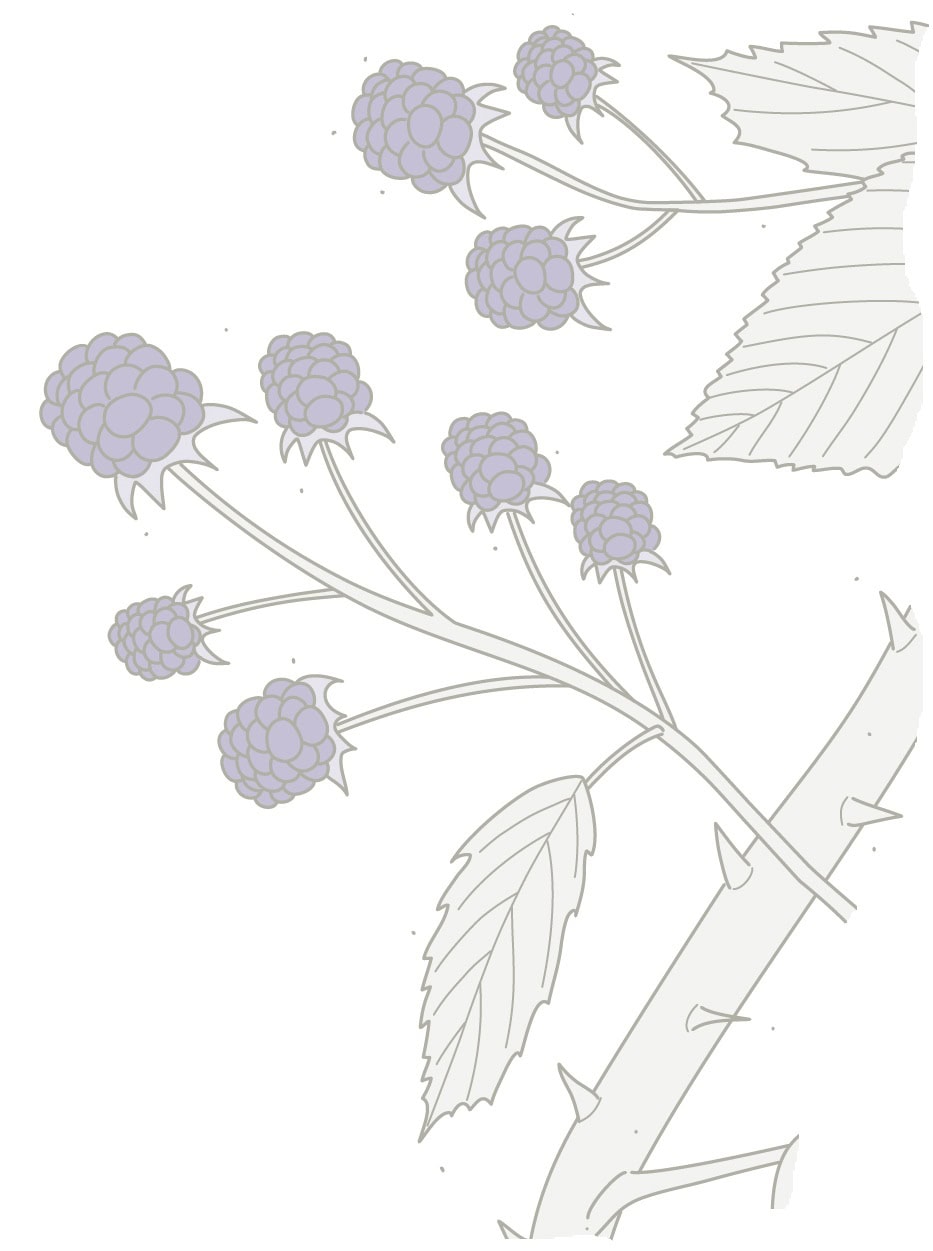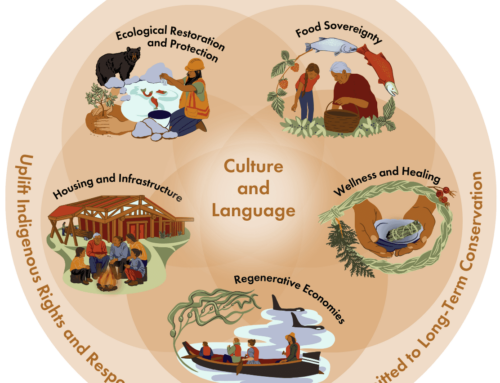Giving in a Good Way: Transforming Colonial Funding Practices for Conservation

An illustration of a blackberry bush with thorns. (Illustration by Jaime Kapitain, KAP Design)
Prepared by: Sara Wilbur-Collins
This work is licensed under a Creative Commons Attribution-NonCommercial-ShareAlike 4.0 International License
Publication Date: June 2024
Acknowledgements
I was fortunate to be included in the inaugural cohort of the University of Guelph’s Master of Conservation Leadership (MCL) program. A vital part of my MCL experience was time spent with two individuals: Elder Larry McDermott (Shabot Obaadjiwan First Nation) and Tim Johnson (Mohawk), each with decades of experience in seeking funding for projects ranging from biodiversity to forestry to community development, all seated firmly within Indigenous cultural awareness.
My most sincere thanks go to Larry and Tim for guiding me in this work. I am grateful to Dr. Robin Roth, then-coordinator of the MCL program, for her ongoing advice. Thanks also to Lisa McLaughlin of the Nature Conservancy of Canada, for helping me to develop the idea of comparing the challenges and seeking common ground.
I appreciate Jamie Kapitain’s work to beautifully and efficiently illustrate the barriers and considerations through the analogy of a blackberry bush with thorns and fruit. Finally, thank you to Kristy Tomkinson of the Conservation through Reconciliation Partnership (CRP) and the IISAAK OLAM Foundation for her persistence in bringing this paper to life. I am grateful for your tenacity!
I dedicate this toolkit to the twenty-two individuals whom I interviewed to inform the guidance and considerations contained therein. Thank you for sharing your stories, challenges, and insights with me.
Sara Wilbur-Collins
June 2024
Overview
This report was developed from a more extensive research paper requirement of the Masters of Conservation Leadership (MCL) program at the University of Guelph in 2022. The paper was centred around the voices of those who shared their perspectives on challenges related to meaningfully funding Indigenous-led efforts.
Condensed to a practical set of guidelines, this report outlines substantial barriers (thorns) for Indigenous-led organizations seeking and obtaining funding from donors. It also offers key considerations (fruit) for philanthropic organizations to create meaningful, respectful, sustainable, and trust-based funding models. These are further illustrated through a diversity of perspectives and voices within the Indigenous-led conservation space.
In an effort to bring my whole self to this project, this report includes personal reflections told in first-person perspective.
Every effort was made to ensure an ethics process has been followed during my conversations with 22 individuals. All direct quotes have been reviewed by their contributors but will remain anonymous.
This report serves as a starting point for a broader conversation on decolonizing philanthropy, urging funders to critically assess and address colonial practices and assumptions in their engagements and relationships with Indigenous conservation organizations.
View the report here.
View the accompanying infographic below, or download it here.
Infographic
Investment and interest in supporting Indigenous-led conservation efforts has increased significantly over the past five years. But entrenched, colonial approaches to funding and philanthropy can create many barriers for Indigenous-led conservation organizations.
The following infographic outlines the key challenges (thorns) Indigenous-led conservation organizations face when seeking or accepting funding, and the considerations (fruit) for philanthropic organizations to create meaningful, respectful, sustainable, and trust-based funding models.





